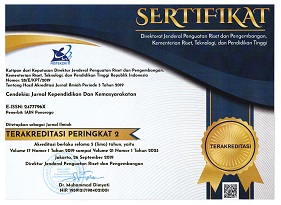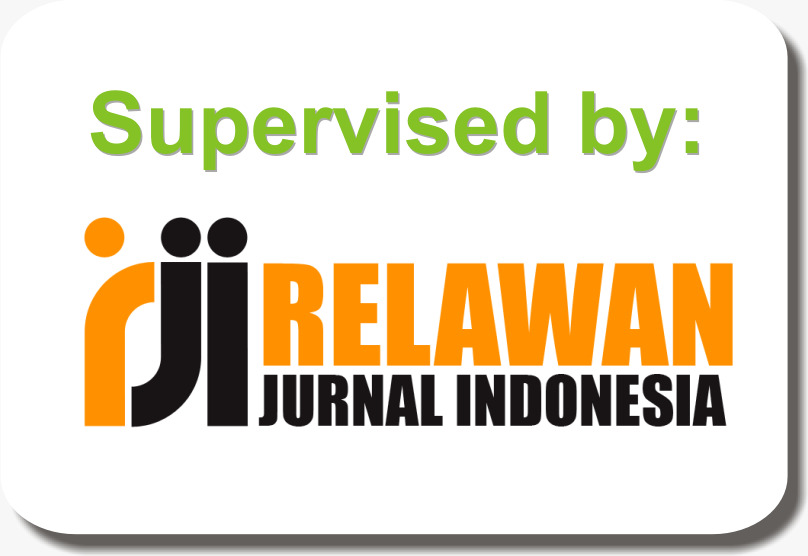Spiritual Intelligence and Juvenile Delinquency of Students in Salatiga: A Study of the Rasch Model
DOI:
https://doi.org/10.21154/cendekia.v19i2.2614Keywords:
Juvenile delinquency, spiritual intelligence, spiritual level of intelligence, juvenile delinquency level, juvenile delinquency factorsAbstract
This study examines the students' level of spiritual intelligence and juvenile delinquency and their relationship. The sample of this research was 348 senior high school students from Salatiga. They were selected randomly. It employed the spiritual intelligence modified by Danah Zohar and Marshall and delinquency instrument modified by Kartono. The data analysis used Winstep version 3.73 for the Rasch model and the IBM Statistical Package for Social Science (SPSS) 23. The results showed that the logit value that the majority of the students experienced a moderate level of spiritual quotient and juvenile delinquency. The independent sample t-test result revealed that female students had higher spiritual intelligence than male students. In addition, male students had a higher juvenile delinquency tendency than female students. The correlation test result indicated a significant correlation between spiritual quotient and juvenile delinquency (r=-.386, n=348, p.000).
Penelitian ini bertujuan untuk mengetahui tingkat kecerdasan spiritual dan kenakalan remaja di kalangan pelajar, serta hubungan kecerdasan spiritual dan kenakalan remaja. Penelitian ini merupakan penelitian kuantitatif non-eksperimen dengan rancangan survey. Sebanyak 330 siswa SMA dan MA negeri di Salatiga yang dipilih secara simple random sampling ikut serta dalam penelitian survei ini. Instrumen yang digunakan untuk pengumpulan data adalah angket kecerdasan spiritual dari Danah Zohar dan Marshall serta angket kenakalan remaja dari Kartono. Data yang telah dikumpulkan kemudian dianalisis menggunakan aplikasi Winstep versi 3.73 dari Rasch model dan aplikasi IBM Statistical Package for Social Science (SPSS) versi 23. Hasil dari analisis menggunakan Rasch model ditemukan nilai logit yang menunjukkan bahwa sebagian besar pelajar memiliki tingkat kecerdasan spiritual dan kenakalan remaja pada tingkatan sedang. Hasil uji t-test sampel bebas menunjukkan bahwa siswa perempuan memiliki kecerdasan spiritual lebih tinggi dibanding siswa laki-laki. Adapun siswa laki-laki memiliki kecenderungan kenakalan remaja lebih tinggi dibandingkan siswa perempuan. Hasil uji korelasi menunjukkan korelasi negatif yang signifikan antara kecerdasan spiritual dengan kenakalan remaja dengan nilai (r=-.386, n=348, p.000). Hal tersebut menunjukkan jika tingkat spiritual meningkat, maka kenakalan remaja akan menurun.
Downloads
Published
Issue
Section
License
Copyright & License
Please find the rights and licenses in Cendekia: Jurnal Kependidikan dan Kemasyarakatan. By submitting the article/manuscript, the author(s) agree with this policy. No specific document sign-off is required.
1. License
The non-commercial use of the article will be governed by the Creative Commons Attribution license as currently displayed on the Creative Commons Attribution-NonCommercial 4.0 International License.
2. Author(s)' Warranties
The author warrants that the article is original, written by the stated author(s), has not been published before, contains no unlawful statements, does not infringe the rights of others, is subject to copyright that is vested exclusively in the author and free of any third party rights, and that any necessary written permissions to quote from other sources have been obtained by the author(s).
3. User/Public Rights
The spirit of Cendekia: Jurnal Kependidikan dan Kemasyarakatan is to disseminate articles published as free as possible. Under the Creative Commons license, Cendekia: Jurnal Kependidikan dan Kemasyarakatan permits users to copy, distribute, display, and perform the work for non-commercial purposes. Users will also need to attribute authors and Cendekia: Jurnal Kependidikan dan Kemasyarakatan on distributing works in the journal and other media of publications. Unless otherwise stated, the authors are public entities as soon as their articles got published.
4. Rights of Authors
Authors retain all their rights to the published works, such as (but not limited to) the following rights;
- Copyright and other proprietary rights relating to the article, such as patent rights,
- The right to use the substance of the article in own future works, including lectures and books,
- The right to reproduce the article for own purposes,
- The right to self-archive the article,
- The right to enter into separate, additional contractual arrangements for the non-exclusive distribution of the article's published version (e.g., post it to an institutional repository or publish it in a book), with an acknowledgment of its initial publication in this journal (Cendekia: Jurnal Kependidikan dan Kemasyarakatan).
5. Co-Authorship
If the article was jointly prepared by more than one author, any author submitting the manuscript warrants that he/she has been authorized by all co-authors to be agreed on this copyright and license notice (agreement) on their behalf and agrees to inform his/her co-authors of the terms of this policy. Cendekia: Jurnal Kependidikan dan Kemasyarakatan will not be held liable for anything arising due to the author(s) internal dispute. Cendekia: Jurnal Kependidikan dan Kemasyarakatan will only communicate with the corresponding author.
6. Royalties
Being an open accessed journal and disseminating articles for free under the Creative Commons license term mentioned, the author(s) are aware that Cendekia: Jurnal Kependidikan dan Kemasyarakatan entitles the author(s) to no royalties or other fees.
7. Miscellaneous
Cendekia: Jurnal Kependidikan dan Kemasyarakatan will publish the article (or have it published) in the journal if the article's editorial process is completed. The editors of Cendekia: Jurnal Kependidikan dan Kemasyarakatan may modify the paper to a style of punctuation, spelling, capitalization, referencing, and usage that deems appropriate. The author acknowledges that the article may be published so that it will be publicly accessible, and such access will be free of charge for the readers, as mentioned in point 3.

















